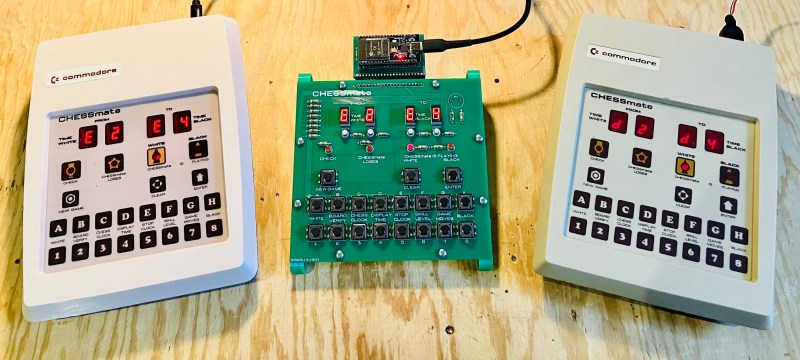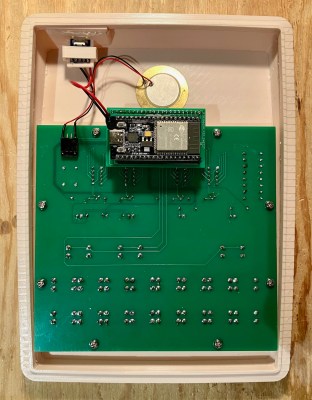The Commodore CHESSmate chess computer might not be terribly well known, but that doesn’t make it any less worthy of being reproduced. If anything it is more important, as it gives more people an opportunity to use one of these devices, yet beyond a purely emulated experience the real user interface is harder to experience.
This is where [Michael Gardi]’s modernized replica provides a highly accessible version, consisting of a custom PCB with an ESP32 as the brains of the system. Although decidedly overkill next to the 6502 in the original CHESSmate, it makes the project far easier for others to assemble as it contains few components that shouldn’t be readily available.
The ESP32 is mounted on a small daughterboard which plugs into the main PCB with the buttons, LEDs and indicators. The whole stack is then inserted into the 3D printed reproduction case. These 3D models along with the ESP32 port of the CHESSmate firmware can be found in the GitHub repository, along with a minimalist frame and a ‘CHESSmate Lite’ version as alternative enclosure options for those who somehow don’t appreciate the delightful 1980s aesthetics.
We covered the Commodore CHESSmate last year, including a highly faithful reproduction built by [Hans Otten], which [Michael] read the day after meeting [Peter Jennings], the author of MicroChess (which the CHESSmate uses internally) at an event at York University. Taking this as a sign, he set to work on this particular project.
We’re not sure if there’s really a cosmic force directing [Michael] towards his next project, but if there is, we’d like to take this opportunity to thank it for doing a fantastic job so far.

















“not terribly well known”
I think I remember these things being all over the place when I was little.
Thanks for the reminder just how long it’s been.
I had just started university when the CHESSmate came out. Had I known about it (I don’t remember if I ever saw one or an ad for that matter), I would have wanted one for sure, but probably could not have afforded it.
Might I nitpick that the CHESSmate uses a 6504?
Thanks.
nitpicking = allowed and appreciated
Could they have used an NE555 instead?
Okay, I must ask… These vintage chess programs running on 1MHz 8-bit microprocessors with tiny memories… How good were they, objectively? In 2006 when my father-in-law played against GNU chess, we estimated its rating at about 1,800 (please be kind if I’m wrong; it’s just an estimate).
“It has been estimated to have the strength of a beginning player, at around 1100 Elo.”
https://en.wikipedia.org/wiki/Microchess#cite_ref-CHinterview1:17:30-1:19:00_2-0
Pretty good for a program that ran in 1K of memory.
Pretty good if it even made legal moves with that much memory haha. I heard of another product from around that time that would make illegal moves at higher rating levels to secure the win.